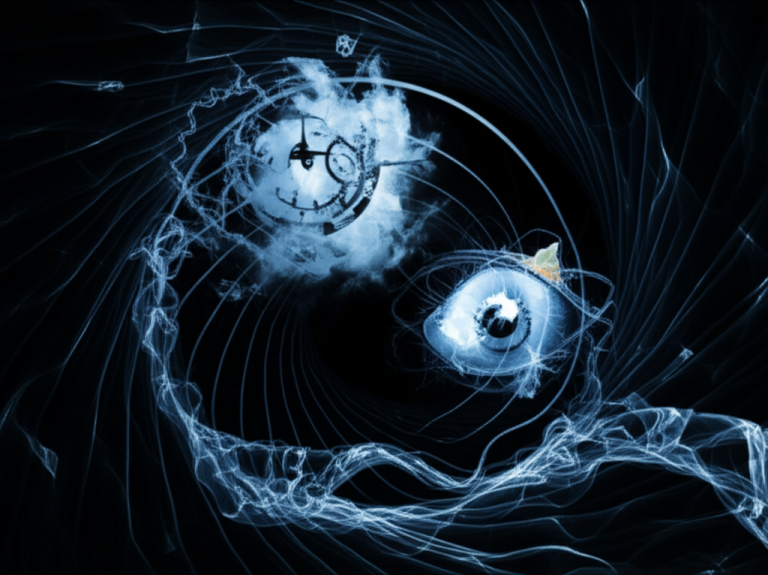Support our educational content for free when you buy through links on our site. Learn more
Do Dream Symbols Hold Secret Messages? 12 Ways to Decode Your Dreams 🧠

Have you ever woken up from a dream feeling confused, intrigued, or even a little bit scared? You’re not alone. Dreams have captivated humans for centuries, and the symbols they contain often hold a deeper meaning than we realize. We’ve all had those dreams where we’re flying, being chased, or showing up naked in public – but what do these bizarre scenarios actually mean?
Dream interpretation is a fascinating journey of self-discovery, and it’s a skill you can learn. In this comprehensive guide, we’ll explore the history of dream symbolism, the power of the unconscious mind, common dream symbols and their meanings, and practical techniques for decoding your dreams. We’ll also delve into the science of dreams and how neuroscience is shedding light on the biological processes behind our nighttime adventures. Get ready to unlock the hidden messages of your dreams and gain a deeper understanding of yourself!
Key Takeaways
- Dream symbols are like metaphors, representing deeper feelings, thoughts, and experiences. They’re not literal translations, but rather a way for your unconscious mind to communicate with you.
- The same symbol can have different meanings for different people. Pay attention to your personal associations with the symbols that appear in your dreams.
- Dream journaling is a powerful tool for understanding your dreams. Keep a notebook by your bed and jot down your dreams as soon as you wake up.
- Trust your intuition! The most accurate interpretation will likely resonate deeply with you on an emotional level.
👉 Shop Dream Journals on:
- Amazon: https://www.amazon.com/Dream-Journal-Notebook-Recording-Interpretations/dp/B0CQM5Y9M5?tag=bestbrands0a9-20
- Walmart: https://www.walmart.com/ip/Dream-Journal-Dream-Interpretation-Notebook/168821304
- Etsy: https://www.etsy.com/uk/market/dream_journals
Table of Contents
- Quick Tips and Facts
- The History of Dream Symbolism: From Ancient Times to Modern Psychology
- The Power of the Unconscious: How Dreams Reveal Our Inner World
- Common Dream Symbols and Their Meanings: A Comprehensive Guide
- The Role of Personal Experience and Context in Dream Interpretation
- Dream Dictionaries and Their Limitations: A Critical Look
- The Science of Dreams: What Neuroscience Tells Us About Dream Symbols
- The Art of Dream Interpretation: Techniques and Approaches
- Using Dreams for Personal Growth and Transformation: A Practical Guide
- Dream Journaling: A Powerful Tool for Understanding Your Dreams
- The Importance of Trusting Your Intuition: Deciphering the Language of Your Dreams
- Conclusion
- Recommended Links
- FAQ
- Reference Links
Quick Tips and Facts #quick-tips-and-facts
- 🤔 Dream symbols are like poetic metaphors, not literal translations. Your dream of failing a test probably isn’t about actual exams, but rather feelings of inadequacy in some area of your life.
- 🗝️ The same symbol can have different meanings for different people. A snake might represent transformation for one person, and danger for another. What do symbols in dreams mean?
- 📝 Keeping a dream journal can help you spot recurring themes and symbols in your dreams, offering valuable clues about your subconscious mind.
- 💡 Don’t just focus on individual symbols. Pay attention to the overall feeling or theme of the dream, too.
- ❤️ Trust your gut! The most accurate interpretation will likely resonate deeply with you on an emotional level.
The History of Dream Symbolism: From Ancient Times to Modern Psychology #the-history-of-dream-symbolism-from-ancient-times-to-modern-psychology

Dream interpretation is as old as civilization itself. From ancient Mesopotamia to modern psychology, humans have long been fascinated by the hidden meanings of their dreams.
Ancient Civilizations and Dream Oracles
- In ancient Mesopotamia, dreams were considered messages from the gods, and priests acted as dream interpreters, advising kings and commoners alike.
- The Egyptians even had elaborate dream dictionaries, like the “Dream Book of Hor,” which categorized thousands of dream symbols and their interpretations.
The Influence of Religion and Mythology
- Religious texts like the Bible are filled with stories of prophetic dreams, further solidifying the belief that dreams held spiritual significance.
- Greek mythology gave us Morpheus, the god of dreams, highlighting the power and mystery humans attributed to the dream world.
The Birth of Modern Dream Interpretation
- Fast forward to the late 19th century, and we have Sigmund Freud, the father of psychoanalysis. Freud revolutionized dream interpretation, proposing that dreams were a window into the unconscious mind, revealing hidden desires and repressed emotions.
- Carl Jung, a contemporary of Freud, expanded on this idea, suggesting that dreams also contained universal archetypes and symbols shared by all humanity.
The Power of the Unconscious: How Dreams Reveal Our Inner World #the-power-of-the-unconscious-how-dreams-reveal-our-inner-world
Think of your dreams as a nightly stage production directed by your unconscious mind. The characters, setting, and plot are all symbolic representations of your thoughts, feelings, and experiences.
Dreams as Emotional Processors
- Ever notice how your dreams often amplify emotions? A minor annoyance in waking life might morph into a full-blown nightmare! That’s because dreams help us process and regulate our emotions.
- By working through unresolved feelings in the safe space of our dreams, we can wake up feeling more balanced and emotionally resilient.
Dreams as Problem-Solvers
- Stuck on a problem? Sometimes, your dreams can offer surprising solutions. While you sleep, your unconscious mind continues to work on challenges, often presenting fresh perspectives and insights in your dreams.
- Keep a notebook by your bed to jot down those dream epiphanies before they fade away!
Dreams as Creative Inspirations
- Many artists, writers, and musicians have credited their dreams for sparking their creativity. Paul McCartney famously composed the melody for “Yesterday” in a dream, proving that the dream world can be a wellspring of inspiration.
- Pay attention to those vivid dream images and stories – they might just hold the key to unlocking your own creative potential.
Common Dream Symbols and Their Meanings: A Comprehensive Guide #common-dream-symbols-and-their-meanings-a-comprehensive-guide
While dream symbols are highly personal, some recurring themes and images pop up in dreams across cultures and time periods. Here’s a glimpse into the fascinating world of common dream symbols and their possible interpretations:
1. Being Chased 🏃♀️🏃
- Possible Meanings: Often represents a feeling of being overwhelmed or threatened in waking life. It could be a looming deadline, a difficult conversation you’re avoiding, or a suppressed fear you need to address.
- Ask Yourself: What am I running from in my waking life? What feels overwhelming or threatening?
2. Flying High ✈️
- Possible Meanings: Typically symbolizes a sense of freedom, liberation, or empowerment. You might be experiencing a period of growth, achievement, or newfound confidence.
- Ask Yourself: What areas of my life are soaring? Where am I experiencing a sense of accomplishment or liberation?
3. Taking a Tumble 😵
- Possible Meanings: Can indicate a fear of failure, a loss of control, or a blow to your self-esteem. It might also represent a transition or change in your life that feels unsettling.
- Ask Yourself: Where do I feel insecure or unstable in my waking life? What changes am I navigating that feel challenging?
4. Showing Up Naked 😳
- Possible Meanings: Often represents feelings of vulnerability, exposure, or shame. You might be worried about being judged or feeling inadequate in a particular situation.
- Ask Yourself: Where do I feel exposed or vulnerable in my waking life? What situations trigger feelings of self-consciousness?
5. Teeth Taking a Dive🦷
- Possible Meanings: Can symbolize a fear of aging, a loss of power or control, or concerns about your appearance. It might also relate to communication issues or feeling unable to express yourself.
- Ask Yourself: What changes am I experiencing that make me feel insecure or powerless? Am I holding back my true feelings or opinions?
The Role of Personal Experience and Context in Dream Interpretation #the-role-of-personal-experience-and-context-in-dream-interpretation
Remember, dream dictionaries are just starting points. The most accurate interpretations come from understanding the symbols within the context of your own life.
Your Unique Symbolism
- A dog might represent loyalty and companionship to one person, but trigger anxiety and fear in someone who had a negative childhood experience with dogs.
- Pay attention to your personal associations with the symbols that appear in your dreams.
The Power of Your Subconscious
- Your subconscious speaks a language of metaphors and emotions. Don’t get too caught up in literal interpretations. Instead, focus on the feelings and themes that emerge from the dream.
- What emotions did the dream evoke? What was the overall message or lesson?
Seeking Professional Guidance
- If you’re struggling to understand your dreams or find recurring nightmares distressing, consider consulting with a qualified dream analyst or therapist. They can provide a safe and supportive space to explore the deeper meaning of your dreams.
Dream Dictionaries and Their Limitations: A Critical Look #dream-dictionaries-and-their-limitations-a-critical-look
Dream dictionaries can be tempting – who doesn’t love a quick and easy answer? But here’s the catch: they often offer generic interpretations that might not resonate with your unique experiences and emotions.
One Symbol, Multiple Meanings
- Let’s take the example of water. In a dream dictionary, water might be listed as a symbol of emotions. But water can manifest in countless ways in dreams – a calm lake, a raging ocean, a dripping faucet.
- Each of these scenarios would likely evoke different feelings and hold different meanings for the dreamer.
The Importance of Personal Context
- Imagine two people dream about losing their teeth. One person is a successful CEO worried about aging and losing their edge. The other is a shy artist struggling to find their voice.
- While the symbol is the same, the underlying meaning is likely very different for each individual.
Don’t Limit Your Interpretation
- Use dream dictionaries as a springboard for exploration, not a definitive guide. Pay attention to your gut feelings and personal associations with the symbols.
- Remember, you are the ultimate expert on your own dreams!
The Science of Dreams: What Neuroscience Tells Us About Dream Symbols #the-science-of-dreams-what-neuroscience-tells-us-about-dream-symbols
While the interpretation of dream symbols remains a largely subjective field, neuroscience is shedding light on the biological processes behind our dreams.
The Role of REM Sleep
- Most vivid dreaming occurs during REM (Rapid Eye Movement) sleep, a stage characterized by increased brain activity, muscle paralysis, and rapid eye movements.
- During REM, the brain is busy consolidating memories, processing emotions, and making sense of the day’s events.
The Activation-Synthesis Theory
- This theory, proposed by J. Allan Hobson and Robert McCarley, suggests that dreams are the brain’s way of making sense of random neural activity during REM sleep.
- While the initial neural firings might be random, the brain attempts to create a coherent narrative, resulting in the bizarre and often illogical nature of our dreams.
The Threat Simulation Theory
- This theory, put forth by Antti Revonsuo, posits that dreams serve an evolutionary function – to help us rehearse for potential threats and dangers in a safe environment.
- This might explain why so many of us experience dreams about being chased, attacked, or facing other perilous situations.
The Art of Dream Interpretation: Techniques and Approaches #the-art-of-dream-interpretation-techniques-and-approaches
Dream interpretation is both an art and a science. While there’s no one-size-fits-all approach, here are some techniques to help you unlock the hidden meanings of your dreams:
1. Dream Journaling 📓
- Keep a notebook by your bed and jot down your dreams as soon as you wake up. Record as many details as possible – emotions, colors, characters, setting.
- Over time, you’ll start to notice recurring themes, symbols, and patterns that offer valuable insights into your subconscious mind.
2. Free Association 💭
- Choose a dream symbol that stands out to you and write down any words, memories, or feelings that come to mind.
- Don’t censor yourself – let your thoughts flow freely. This technique can help you uncover hidden connections and associations.
3. Gestalt Dreamwork 🎭
- This approach views dream elements as parts of yourself. Instead of analyzing the dream from a distance, you step into the dream and engage with the symbols as if they were separate entities.
- You might ask a dream character, “What do you represent to me?” or “What message are you trying to convey?”
4. Working with a Dream Analyst 🧙♀️
- A qualified dream analyst can provide guidance, support, and a fresh perspective on your dreams. They can help you identify recurring patterns, understand challenging symbols, and use your dreams as a tool for personal growth.
Using Dreams for Personal Growth and Transformation: A Practical Guide #using-dreams-for-personal-growth-and-transformation-a-practical-guide
Dreams aren’t just fleeting nighttime stories – they’re powerful tools for self-discovery, healing, and transformation. Here’s how to harness the wisdom of your dreams:
1. Identify Recurring Themes and Patterns 🔁
- Are you constantly dreaming about being chased? Do you often find yourself lost or unprepared for an exam? Recurring dream themes often highlight unresolved issues, fears, or desires that need your attention.
- Once you’ve identified these patterns, you can start exploring the underlying messages and take steps to address them in your waking life.
2. Face Your Fears and Shadows 💪
- Dreams can bring our deepest fears and insecurities to the surface. While it’s tempting to shy away from these uncomfortable emotions, facing them head-on can be incredibly liberating.
- What is your dream trying to tell you about yourself? What steps can you take to overcome these challenges and step into your power?
3. Tap into Your Creative Potential 🎨
- Dreams are a wellspring of creativity and inspiration. Pay attention to the vivid imagery, fantastical scenarios, and unexpected connections that emerge in your dreams.
- Keep a dream journal specifically for capturing these creative sparks and explore how you can incorporate them into your waking life.
4. Practice Dream Incubation 💡
- Want guidance on a specific issue? Before you go to sleep, set an intention to dream about the topic that’s on your mind. Write down your question or concern and visualize yourself receiving insights and answers in your dream.
- You might be surprised by the clarity and wisdom that emerge from your subconscious mind.
Dream Journaling: A Powerful Tool for Understanding Your Dreams #dream-journaling-a-powerful-tool-for-understanding-your-dreams
Think of a dream journal as a dialogue with your subconscious. It’s a space to capture the fleeting world of your dreams and unlock the hidden messages within.
Why Keep a Dream Journal?
- Improved Dream Recall: The simple act of writing down your dreams can significantly improve your ability to remember them.
- Uncovering Patterns: Over time, you’ll start to notice recurring themes, symbols, and emotions, offering valuable clues about your inner world.
- Tracking Personal Growth: Your dreams can reflect your personal growth and transformation over time.
- Problem-Solving and Insight: Dreams can offer creative solutions to waking-life challenges.
- Enhancing Creativity: Dreams are a wellspring of inspiration for artists, writers, and anyone seeking to tap into their creative potential.
Tips for Effective Dream Journaling
- Keep it Close: Place a notebook and pen (or your preferred digital device) on your nightstand for easy access.
- Record Immediately: Jot down your dreams as soon as you wake up, even if it’s just a few fragmented images or feelings.
- Be Detailed: Capture as much detail as possible – colors, emotions, characters, setting, dialogue, and any symbolic elements that stand out.
- Use All Your Senses: Don’t just focus on what you see – record smells, sounds, tastes, and tactile sensations as well.
- Avoid Interpretation (At First): Initially, simply record the dream without analyzing it. Later, you can revisit your entries and look for patterns and meanings.
- Date Your Entries: This helps you track your dreams over time and identify any recurring themes or shifts in symbolism.
- Make it a Habit: Consistency is key. Even if you don’t remember your dreams every night, make it a habit to write in your journal regularly.
Dream Journal Prompts
- What were the most vivid images or symbols in your dream?
- What emotions did you experience during the dream?
- How did the dream make you feel when you woke up?
- Do any of the characters or settings remind you of people or places in your waking life?
- What do you think the dream is trying to tell you?
The Importance of Trusting Your Intuition: Deciphering the Language of Your Dreams #the-importance-of-trusting-your-intuition-deciphering-the-language-of-your-dreams
While dream dictionaries and expert interpretations can be helpful, the most powerful tool for understanding your dreams is your own intuition. Your subconscious speaks a language of symbols and metaphors, and only you hold the key to deciphering its unique code.
The Wisdom Within
- Your intuition is your inner compass, guiding you toward truth and understanding. When you trust your gut feelings about your dreams, you tap into a deep well of wisdom and insight.
- Don’t dismiss your initial reactions or hunches, even if they seem strange or illogical. Your subconscious often communicates in subtle and symbolic ways.
Connecting the Dots
- Pay attention to the emotions and sensations that arise as you explore your dreams. What resonates deeply with you? What feels true, even if you can’t logically explain it?
- Trust that your subconscious is trying to communicate something meaningful, even if the message is veiled in symbolism or metaphor.
Cultivating Trust
- Like any skill, trusting your intuition takes practice. The more you pay attention to your gut feelings and honor your inner wisdom, the stronger your intuition will become.
- Create a safe and supportive space for dream exploration. Meditate, journal, or talk to a trusted friend or therapist about your dreams.
Embracing the Journey
- Dream interpretation is a journey of self-discovery. There’s no right or wrong way to do it, and the answers will unfold in their own time.
- Be patient with yourself, stay curious, and trust that the wisdom of your dreams will guide you toward greater understanding and personal growth.
Conclusion #conclusion

So, do the symbols in dreams have meaning? The answer is a resounding YES! While the exact interpretation of a dream symbol might vary from person to person, dreams are a powerful language of the unconscious mind, offering insights into our emotions, fears, desires, and creative potential.
Remember, the most accurate interpretation comes from understanding the symbols within the context of your own life. Trust your intuition, explore your dreams with curiosity, and don’t be afraid to seek guidance from a qualified dream analyst or therapist.
Your dreams are a unique and personal reflection of your inner world. Embrace the journey of self-discovery and unlock the wisdom hidden within your dreams.
Recommended Links #recommended-links
👉 CHECK PRICE on:
- Dream Dictionary: Amazon | Walmart | Barnes & Noble
- Dream Journal: Amazon | Walmart | Etsy
- Sigmund Freud’s The Interpretation of Dreams: Amazon | Barnes & Noble | Penguin Random House
- Carl Jung’s Man and His Symbols: Amazon | Barnes & Noble | Routledge
FAQ #faq

What do symbols mean in dreams? 🤔
Dream symbols are like metaphors, representing deeper feelings, thoughts, and experiences. They’re not literal translations, but rather a way for your unconscious mind to communicate with you.
How do I figure out what a symbol means in my dream?
- Personal Associations: What does the symbol mean to you personally?
- Dream Context: How did the symbol appear in the dream? What emotions did it evoke?
- Dream Dictionaries: Use dream dictionaries as a starting point, but don’t rely on them solely.
- Intuition: Trust your gut feeling about the symbol. What resonates with you on an emotional level?
Do dreams really indicate something? 🧐
Yes, dreams can offer valuable insights into your inner world. They can reveal hidden fears, desires, unresolved issues, and creative potential.
How can I use my dreams for personal growth?
- Identify Recurring Themes: Pay attention to recurring symbols and emotions in your dreams.
- Face Your Fears: Dreams can bring your deepest fears to the surface.
- Tap into Your Creativity: Dreams can inspire new ideas and creative solutions.
How do I find out what my dream means? 🔍
- Dream Journaling: Keep a dream journal to track your dreams and identify patterns.
- Free Association: Write down any thoughts or feelings that come to mind when you think about a dream symbol.
- Dream Interpretation Techniques: Explore techniques like Gestalt dreamwork or working with a dream analyst.
- Trust Your Intuition: Listen to your gut feelings about your dreams.
Reference Links #reference-links
- Dream and Meaning™: https://www.dreamandmeaning.com/
- Sigmund Freud: https://www.freud.org.uk/
- Carl Jung: https://www.jung.org/
- American Psychological Association: https://www.apa.org/
- Can You Analyze Your Own Dreams? Yes, and Here’s How – Psych Central: https://psychcentral.com/lib/dream-analysis-and-interpretation#:~:text=You%20can%20interpret%20your%20dreams,by%20working%20with%20a%20psychotherapist.




